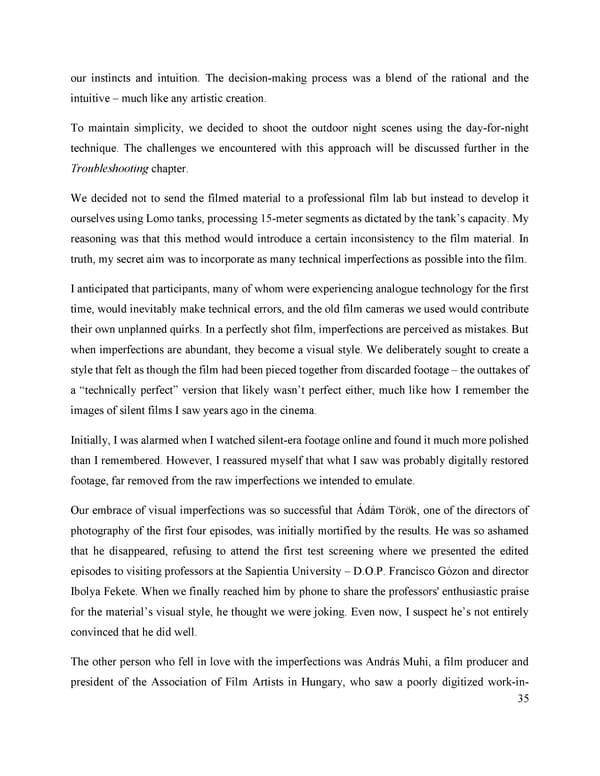our instincts and intuition. The decision-making process was a blend of the rational and the intuitive – much like any artistic creation. To maintain simplicity, we decided to shoot the outdoor night scenes using the day-for-night technique. The challenges we encountered with this approach will be discussed further in the Troubleshooting chapter. We decided not to send the filmed material to a professional film lab but instead to develop it ourselves using Lomo tanks, processing 15-meter segments as dictated by the tank’s capacity. My reasoning was that this method would introduce a certain inconsistency to the film material. In truth, my secret aim was to incorporate as many technical imperfections as possible into the film. I anticipated that participants, many of whom were experiencing analogue technology for the first time, would inevitably make technical errors, and the old film cameras we used would contribute their own unplanned quirks. In a perfectly shot film, imperfections are perceived as mistakes. But when imperfections are abundant, they become a visual style. We deliberately sought to create a style that felt as though the film had been pieced together from discarded footage – the outtakes of a “technically perfect” version that likely wasn’t perfect either, much like how I remember the images of silent films I saw years ago in the cinema. Initially, I was alarmed when I watched silent-era footage online and found it much more polished than I remembered. However, I reassured myself that what I saw was probably digitally restored footage, far removed from the raw imperfections we intended to emulate. Our embrace of visual imperfections was so successful that Ádám Török, one of the directors of photography of the first four episodes, was initially mortified by the results. He was so ashamed that he disappeared, refusing to attend the first test screening where we presented the edited episodes to visiting professors at the Sapientia University – D.O.P. Francisco Gózon and director Ibolya Fekete. When we finally reached him by phone to share the professors' enthusiastic praise for the material’s visual style, he thought we were joking. Even now, I suspect he’s not entirely convinced that he did well. The other person who fell in love with the imperfections was András Muhi, a film producer and president of the Association of Film Artists in Hungary, who saw a poorly digitized work-in- 35
 Lost Analogue: Exploring Film, Music, and Interdisciplinary Methods in Education Page 35 Page 37
Lost Analogue: Exploring Film, Music, and Interdisciplinary Methods in Education Page 35 Page 37